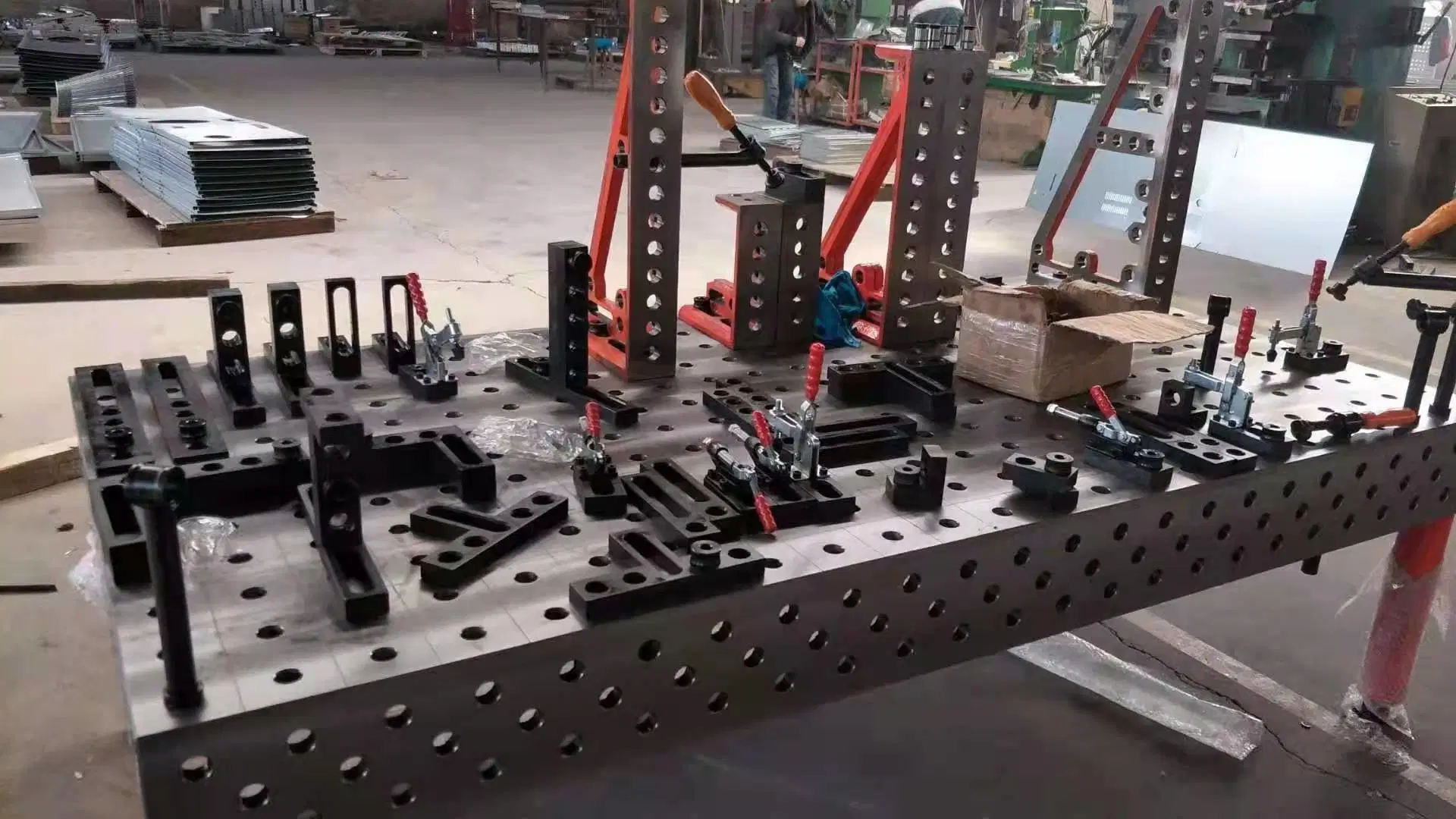- English
- Español
- Português
- русский
- Français
- 日本語
- Deutsch
- tiếng Việt
- Italiano
- Nederlands
- ภาษาไทย
- Polski
- 한국어
- Svenska
- magyar
- Malay
- বাংলা ভাষার
- Dansk
- Suomi
- हिन्दी
- Pilipino
- Türkçe
- Gaeilge
- العربية
- Indonesia
- Norsk
- تمل
- český
- ελληνικά
- український
- Javanese
- فارسی
- தமிழ்
- తెలుగు
- नेपाली
- Burmese
- български
- ລາວ
- Latine
- Қазақша
- Euskal
- Azərbaycan
- Slovenský jazyk
- Македонски
- Lietuvos
- Eesti Keel
- Română
- Slovenski
- मराठी
- Srpski језик
What standards do welding tables used in military production need to meet?
2024-08-30
1. Material standards for welding tables:
Material selection: The steel and other materials used must meet military standards, have high strength, high toughness, wear resistance, corrosion resistance and other characteristics, and be able to adapt to the special requirements of the military production environment. For example, special alloy steel or specially treated steel may be selected to ensure that it is not easy to deform or damage during long-term use.
Material quality: The quality of raw materials must be stable and reliable, and must undergo strict screening and testing. Each batch of materials should have a detailed quality inspection report to ensure that its chemical composition, physical properties and other indicators meet the standard requirements.
2. Structural design standards for welding tables:
Stability: The structural design of the welding table must ensure sufficient stability and be able to withstand various external forces that may be applied during military production, such as equipment placement, personnel operation, etc. The connection between the table legs and the table top must be firm, and the strength of the welding parts must be sufficient to prevent the table from shaking, tilting or even collapsing during use.
Dimensional accuracy: The dimensional accuracy requirements of the table are high, and it must be processed and manufactured strictly in accordance with the design drawings. The flatness and levelness of the desktop and the dimensional tolerances of each component must be controlled within the specified range to ensure the accuracy of coordination with other military equipment or tools.
Ergonomics: The design must comply with the principles of ergonomics to facilitate the use of operators. For example, the height of the desktop should be suitable for the operator's working posture to avoid fatigue or inconvenience in operation due to inappropriate height.
3. Welding table welding process standards:
Welding quality: The welding process should comply with relevant welding quality control standards, such as GJB481-88 "Welding Quality Control Requirements". The welding should be firm and beautiful, and no welding defects such as cold welding, desoldering, welding penetration, pores, slag inclusions, etc. should occur. The welding surface requires uniform corrugation, and the welding strength must meet the design requirements.
Welding process parameters: The process parameters such as current, voltage, welding speed, etc. during the welding process should be reasonably selected and strictly controlled according to the characteristics of the material and welding requirements to ensure the stability of the welding quality.
Qualifications of welding personnel: Personnel engaged in welding work must have the corresponding qualifications and skills, undergo professional training and assessment, and hold relevant welding qualification certificates.
4. Surface treatment standards for welding tables:
Anti-corrosion treatment: In order to improve the corrosion resistance of welding tables, effective surface treatment is required. For example, galvanizing, chrome plating, spraying anti-corrosion paint, etc. are used to protect the steel surface to prevent rust and corrosion in harsh environments such as moisture and corrosive gases.
Appearance requirements: The appearance of the table after surface treatment should be neat and smooth, with uniform color, without obvious scratches, stains, blistering and other surface defects. The adhesion of the surface coating should be strong and not easy to fall off.
5. Safety standards for welding tables:
Anti-static: In some military production sites that are sensitive to static electricity, welding tables need to have anti-static functions. For example, anti-static materials are used to make the tabletop or anti-static coatings are added to the surface of the tabletop to prevent static electricity from damaging electronic equipment, etc.
Fire prevention: The material of the table should have certain fire resistance and be able to prevent the spread of fire to a certain extent. At the same time, the surrounding of the welding table may need to be equipped with corresponding fire prevention facilities, such as fire extinguishers, etc.
Environmental protection: The chemical substances used in the material and surface treatment process must meet environmental protection requirements and must not cause harm to the health of operators and the environment.
6. Quality inspection standards for welding tables:
Process inspection: During the production process, each process must be strictly inspected for quality, including material inspection, welding inspection, surface treatment inspection, etc. If problems are found, they must be rectified in a timely manner to ensure that the quality of each link meets the standard requirements.
Finished product inspection: The finished product must be fully inspected for quality, including appearance inspection, dimensional measurement, strength test, functional test, etc. Only welding tables that have passed strict finished product inspection and have qualified inspection reports can be put into military production.





